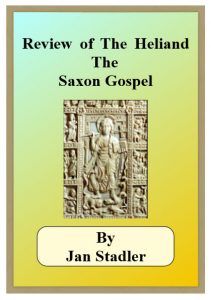THE HELIAND: THE SAXON GOSPEL IS A SAXON REINTERPRETATION OF THE MESSAGE OF JESUS CHRIST into a fashion that the proto-Vikings could comprehend. Much in the same way the Gospel of St. Mark was written to accommodate a Greek audience, and the Gospels of St. Matthew and St. Luke to accommodate Hebrew audiences, the Heliand was written to adapt Christianity to people who had very little connection with the Mediterranean world.
This text is beginning to experience a revival as of late among dissident right-wingers seeking a way to better understand folkish religion. It should be of prime importance that Christians be familiar and (if possible) well-versed with the text in order not only to better understand their own folkish traditions and identity, but also to help bring identitarians struggling with the vapidness of modern, liberal Christianity into a deeper understanding of the faith.
History of the Text
The Heliand, meaning “saviour,” was written sometime in the eighth century after Charlemagne conquered the Saxon pagans of northern Germany. Nobody is sure who exactly wrote it, but it was probably written by a monk or missionary who was both literate and intimately familiar with north German culture, customs, and language.
